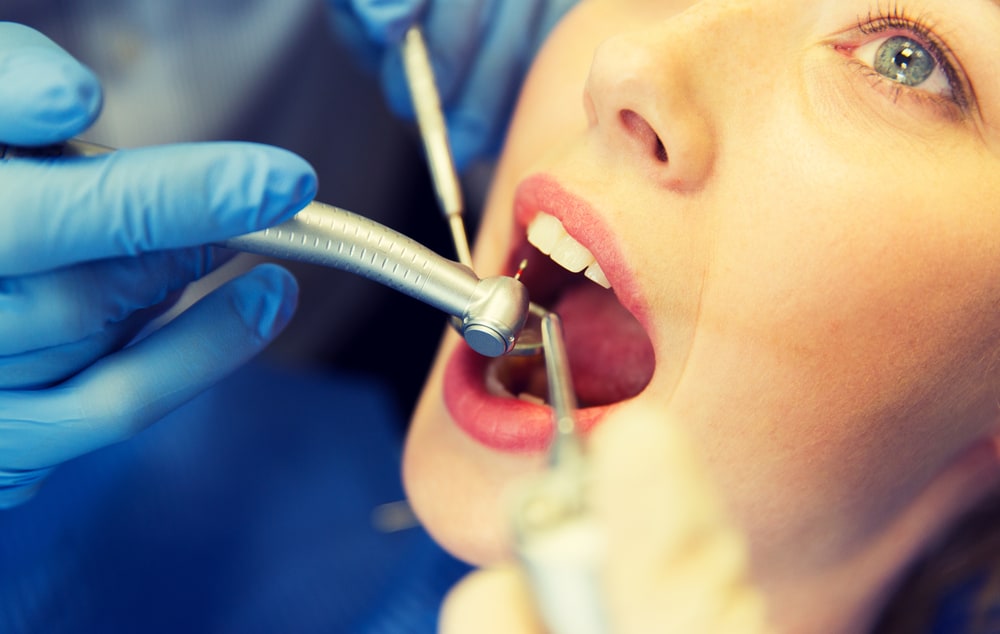Wisdom tooth extraction is a common dental procedure that can sometimes cause discomfort and confusion. It is important to be aware of what to expect during the healing process.
This article will provide a comprehensive overview of the surgical process, pain management, diet guidelines, bleeding and swelling, oral hygiene, rest and relaxation, follow-up care, and troubleshooting complications to help ensure a safe and speedy recovery.
With the right preparation and care, the healing process can be smooth and successful.
Surgical Process
First and foremost, it is important to understand the surgical process of wisdom tooth extraction. Wisdom teeth removal typically begins with a consultation with your dentist to discuss the procedure, risks, and expected healing time.
During the actual tooth extraction procedure, your dentist will use a local anesthetic or nitrous oxide to numb the area. The tooth and surrounding tissue may then be removed to ensure the entire tooth has been extracted. Afterwards, gauze may be placed at the extraction site to stop any bleeding.
It is recommended to rinse your mouth with warm salt water every few hours to help reduce swelling and speed up the healing process. You should also avoid physical activity for 24-48 hours after the procedure to prevent dry sockets or any further complications. Additional aftercare may also include taking an over-the-counter pain reliever or applying an ice pack, if necessary.
Pain Management
Generally, some degree of pain and discomfort is to be expected after a wisdom tooth extraction; however, there are several methods of pain management available to help ease the healing process.
After a wisdom tooth removal, your dentist may recommend a soft food diet to reduce strain on the surgical site. Additionally, they may prescribe a pain medication or offer an over-the-counter option to manage pain and discomfort.
In more severe cases, a root canal may be recommended to reduce the risk of infection. Finally, if needed, a dentist may opt for a second surgical extraction if the first procedure does not completely remove the wisdom tooth.
Each of these treatment options can be used to help reduce pain and discomfort associated with wisdom tooth removal. While the degree of pain experienced can vary greatly, it is important to keep in mind that healing times can vary for each individual. Therefore, it is important to follow your dentist’s instructions and take advantage of the available pain management options to help ensure a successful recovery.
Diet Guidelines
In order to speed up healing and promote recovery, it is important to adhere to a soft food diet following wisdom tooth extraction. An oral surgeon will often provide detailed instructions on what to expect after a tooth extraction, including dietary guidelines.
Generally, for the first few days after the surgery, it is important to stick to foods that won’t disrupt the formation of blood clots or irritate the gum tissue. This includes such items as applesauce, smoothies, oatmeal, yogurt, and soft-cooked vegetables. Avoiding salty, spicy, and acidic foods is also recommended during this time.
In addition, drinking warm water throughout the day should be encouraged in order to promote oral health and flush out any bacteria that may be present. Dental extractions can cause dry mouth, so it is important to drink plenty of fluids to prevent this. If any debris is still present, it is recommended to rinse with a salt water solution after eating, to clear it away.
When it is time to transition to solid foods, it is important to choose still items that are soft and easy to chew, such as eggs, grilled chicken, mashed potatoes, and cooked fish. As the days pass, it is okay to add more healthy foods to the diet slowly. However, it is important to avoid hard, crunchy, and sticky foods for at least a week after the surgery.
Following these guidelines will ensure that the tooth extraction area is able to heal properly.
Bleeding and Swelling
Following Wisdom Tooth Extraction, it is normal for patients to experience some degree of post-operative bleeding and swelling. Depending on the type of extraction and the size of the tooth, the tooth extraction process can vary in complexity. Simple wisdom tooth extractions occur with minimal bleeding, while more complicated extractions may require a mild anesthetic or conscious sedation. In some cases, intravenous sedation may be needed.
During the procedure, a piece of gauze is usually placed on the extraction site to help stop bleeding and reduce the risk of infection. After the extraction, the patient will be instructed to apply additional pressure with the gauze for 30 minutes or more. It is also recommended to keep the head elevated and avoid strenuous physical activity for the first few days.
The most common types of extractions are simple extractions and surgical extractions. In a simple extraction, the tooth is removed by using a special dental instrument called an elevator. In a surgical extraction, the tooth is removed with a scalpel, forceps, or other surgical instruments. Depending on the type of extraction, bleeding and swelling may last for several days.
Oral Hygiene
After the extraction, it is important to maintain proper oral hygiene by brushing and flossing twice a day. During the recovery time after a wisdom tooth extraction, it is essential to avoid tooth decay and gum disease. Taking good care of your teeth and gums during the recovery process is key to preventing any further dental treatment. This is especially important as you may be more prone to periodontal disease and other infections in the day after surgery.
When practising oral hygiene, use a soft-bristled toothbrush and gentle toothpaste. Don’t brush too hard or too soon after the extraction, as this can cause further damage. Start brushing lightly the day after surgery and gradually increase the pressure as your mouth heals. Flossing is also important for removing food particles and plaque buildup. Use a waxed floss, and be sure to gently slide it between your teeth, avoiding the extraction site.
Your dentist may prescribe a specific mouthwash to use during the healing process, as this can help reduce the risk of infection. If you are experiencing any pain, you can ask your dentist for over-the-counter pain medications to help ease the discomfort. By following the advice of your dentist and practising good oral hygiene, your mouth should heal quickly and without any further complications.
Rest and Relaxation
How quickly can you expect to heal after wisdom tooth extraction? The type of extraction and the complexity of the root canal treatment will determine the average time for recovery. Generally speaking, wisdom teeth extraction is a quick procedure. However, it is important to follow up with a dental appointment to ensure your mouth is healing properly. While there’s potential risks and side effects, taking proper aftercare for tooth extraction can reduce the aftermath of wisdom teeth.
To ensure quick and successful recovery, it is important to rest and relax after the procedure. This will give your mouth the opportunity to heal and reduce the potential for infection. If you have any pain or swelling, take over-the-counter painkillers and apply a cold compress to the area. Drinking plenty of fluids to stay hydrated will also help with the healing process. It is important to avoid smoking, drinking alcohol, and vigorous exercise for at least 24 hours after the procedure.
If you experience pain or discomfort, contact your dentist immediately. Pay close attention to the healing process and follow your dentist’s instructions for aftercare. With proper rest and relaxation following your wisdom teeth extraction, you should be able to make a full recovery.
Follow-up Care
Once the rest and relaxation period is over, patients should schedule follow-up appointments with their dentist to ensure that the healing process is going as planned. Depending on the type of tooth extraction, the appointment may include an examination of the extraction site, removal of sutures, or an evaluation of any sedation options that were used during the procedure.
Excessive bleeding, pain, swelling, and the presence of cottage cheese-like material in the extraction site should be reported to the dentist. During the appointment, the dentist will evaluate the progress of healing, the root structure of the tooth, and the condition of the adjacent teeth. If the tooth that was extracted had multiple roots, the dentist may recommend an additional appointment to monitor the removal of the remaining tooth roots.
In some cases, the dentist may also recommend removing any additional teeth that may have been impacted by the extraction. By following the dentist’s instructions and scheduling follow-up appointments, patients can ensure that the healing process is going as planned and that their teeth and gums remain healthy.
Troubleshooting Complications
In the event that complications arise after wisdom tooth extraction, patients should take appropriate steps to troubleshoot the issue. Common complications include pain, swelling, and dry socket, all of which can be managed with proper care.
To reduce pain, patients can take over-the-counter or prescribed pain medication as directed. Swelling can be reduced by applying cold compresses or ice packs to the affected area. A dry socket may require the application of an anaesthetic dressing or a solution of chlorhexidine.
Patients should avoid hot liquids, cold foods, or hard, crunchy foods such as chips or nuts. Instead, opt for soft, pureed, or cold foods such as ice cream or mashed potatoes. As healing progresses, solid foods can slowly be incorporated back into the diet.
If complications persist, it is important to contact a healthcare provider for further diagnosis and treatment. With the proper care and attention, patients can get back on the road to recovery quickly and safely.
Key Takeaways
Recovering from wisdom tooth extraction requires a combination of proper pain management, dietary guidelines, oral hygiene, rest and relaxation, and follow-up care.
It is important to closely monitor the healing process and be aware of any potential issues that may arise.
With proper care, the recovery process can be successful and the patient can be back to normal activities in no time.
If you are looking for an experienced and professional team to help you through your wisdom tooth extraction recovery, look no further than Western Sydney Dental, located in St. Marys, NSW. Our team of dedicated professionals will ensure that you get the best possible care to help you through the recovery process. Contact us today to learn more about our services and to schedule an appointment.






